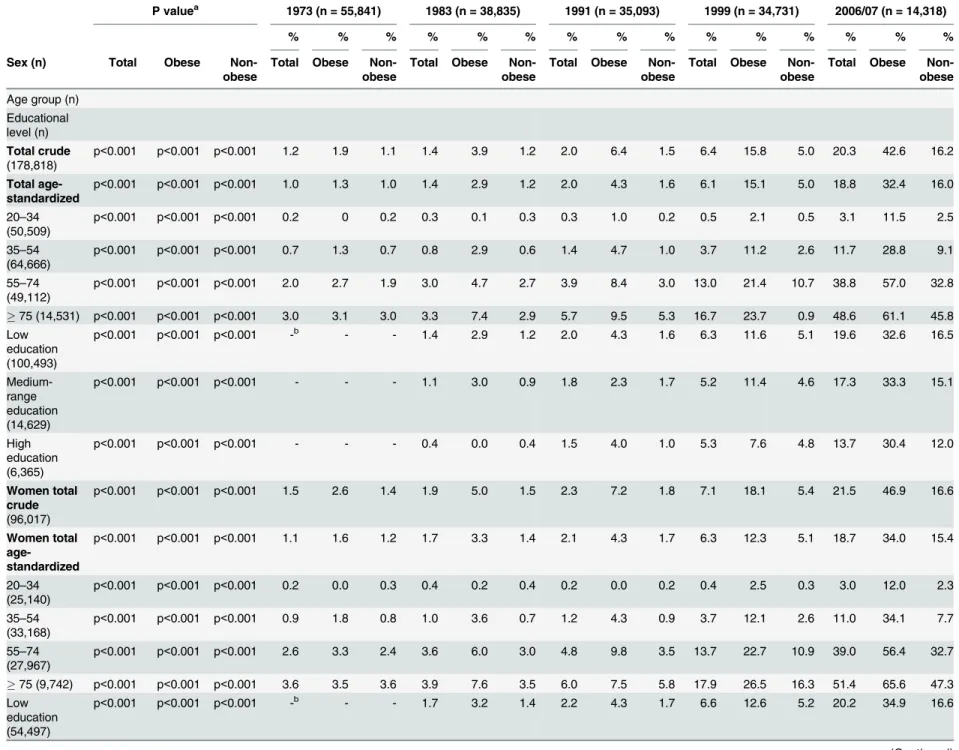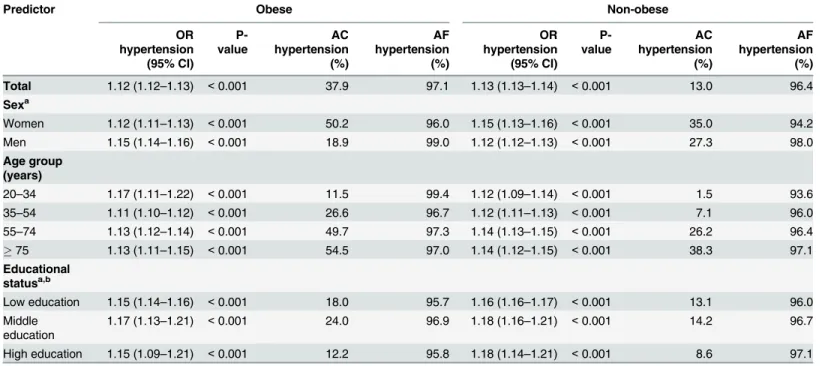Prevalent Long-Term Trends of Hypertension in Austria: The Impact of Obesity and Socio-Demography.
Texto
Imagem



Documentos relacionados
In summary, our study shows that the obese women were older than the controls, and that obesity in early pregnancy increased the risk of hyperglycemic disorders, hypertensive
Among all groups, statistically highest L* value was achieved in group C, which was coated with zein film and packaged in polystyrene plates with PVC stretch, whereas the highest
this study was to evaluate the association among obesity, de- pressive symptoms and cognitive deficit in patients aged 50 years or older followed in a high cardiovascular risk
The probability of attending school four our group of interest in this region increased by 6.5 percentage points after the expansion of the Bolsa Família program in 2007 and
CONCLUSIONS: The upward trend in obesity among women of childbearing age in the context of highly prevalent childhood undernutrition suggests that the focus of maternal and
In order to compute the price/m 2 of municipal land (urban developed land and land which development may be programmed) in the Municipality of Bragança, based on
Considering the nutritional status, the highest prevalence ratio was observed for the evaluation of cardiorespiratory resistance and the obese individuals presented
results: Among obese children, there was a difference in the mean values of HDL cholesterol and adiponectin, whereas among the eutrophic children, there was a difference in the